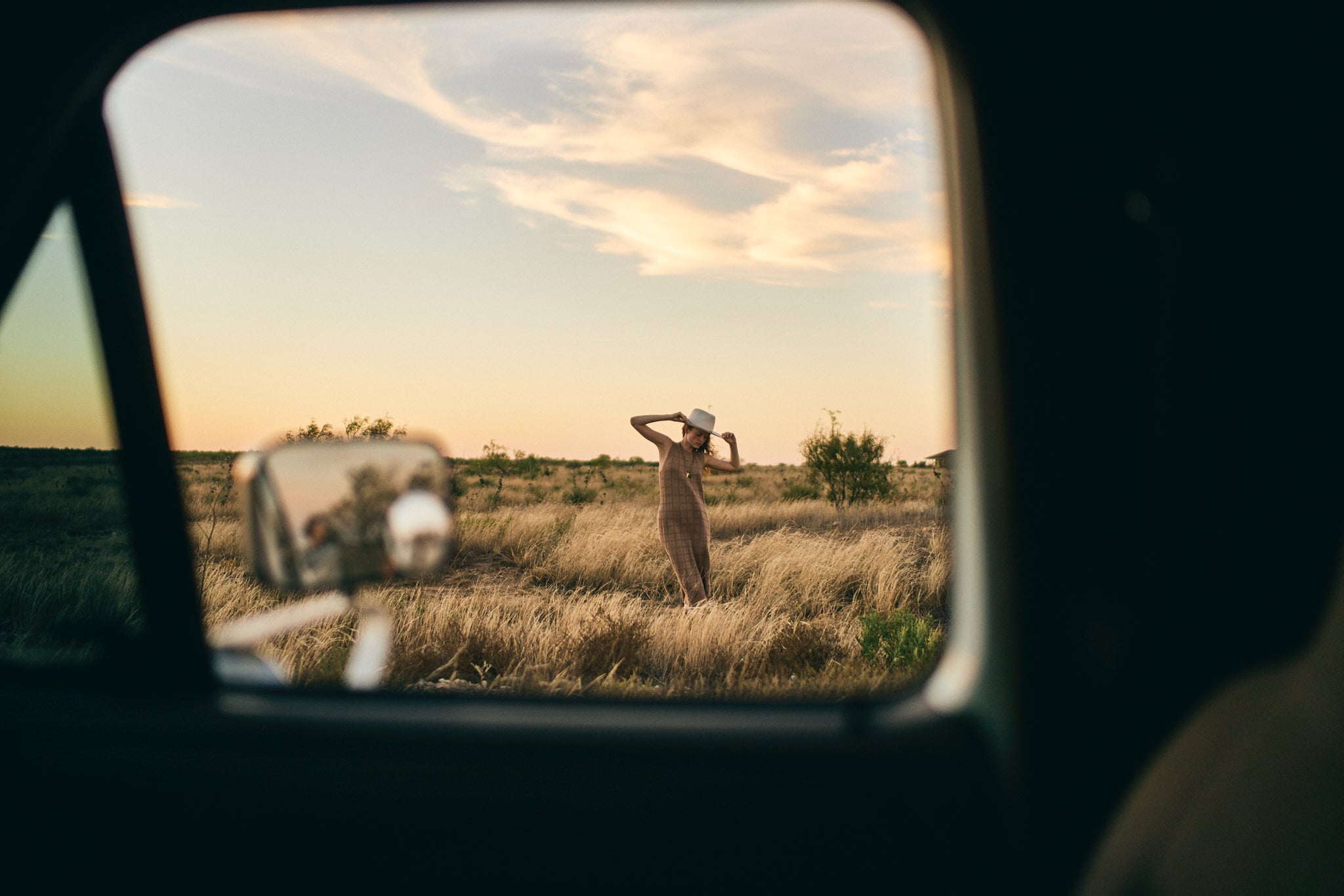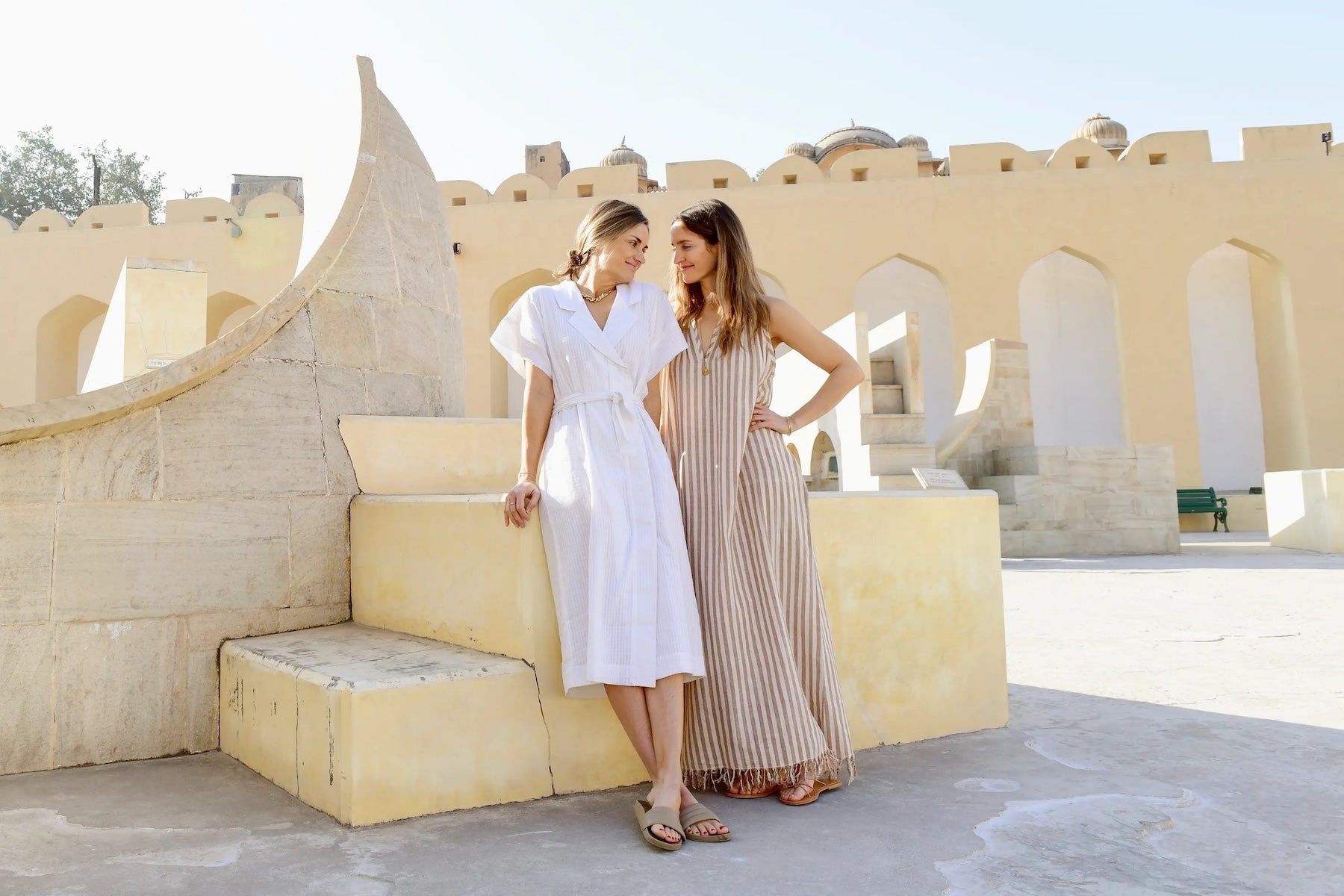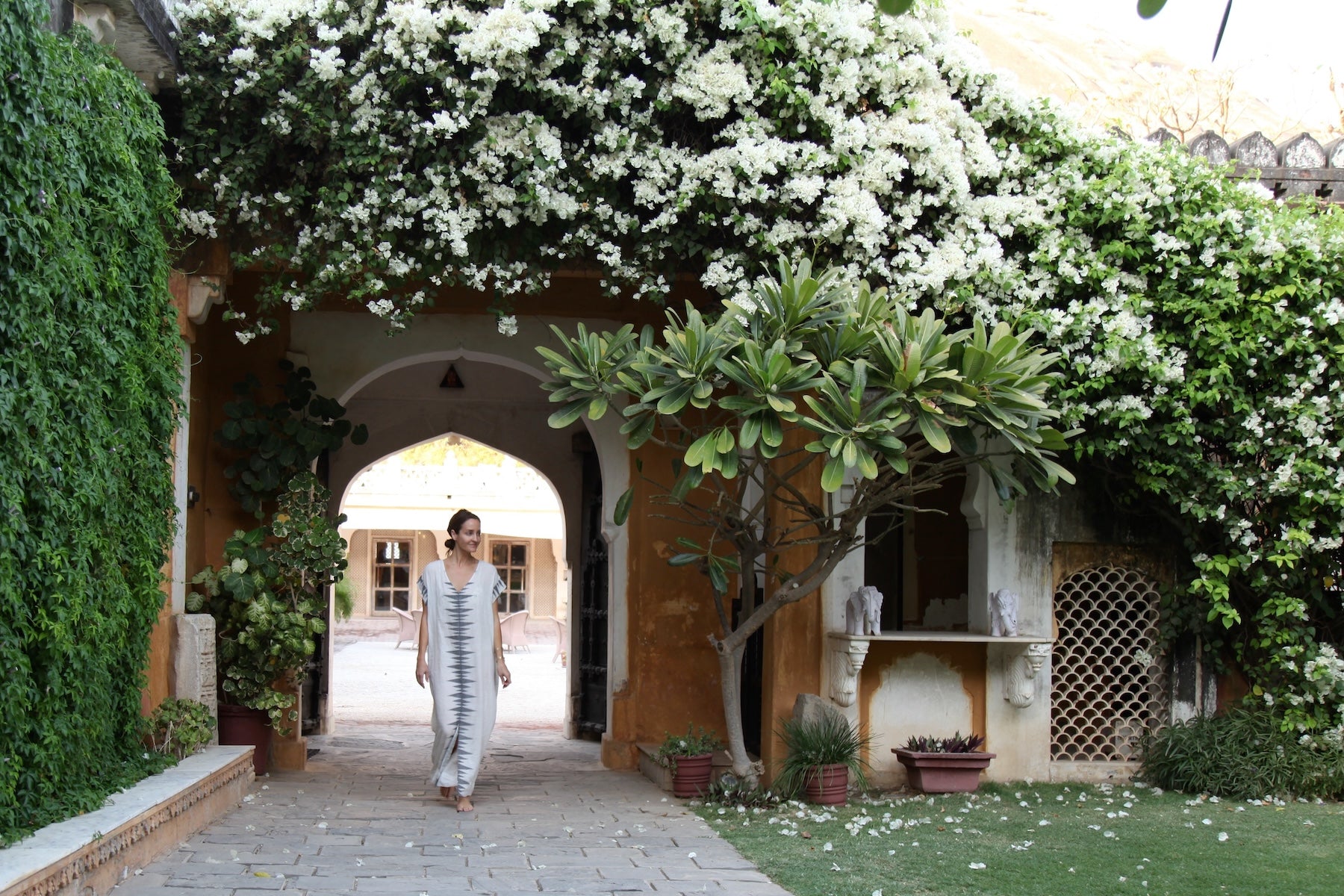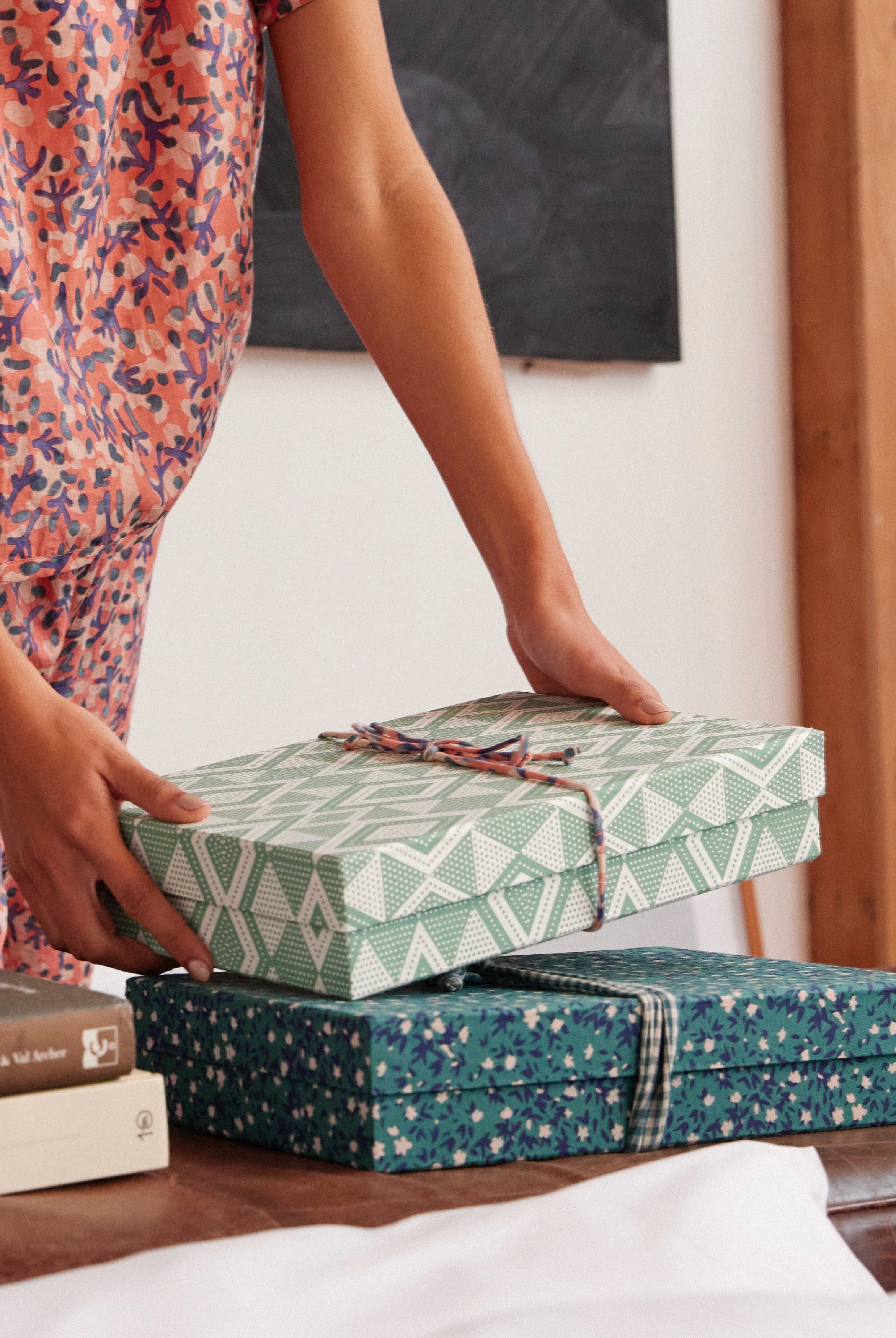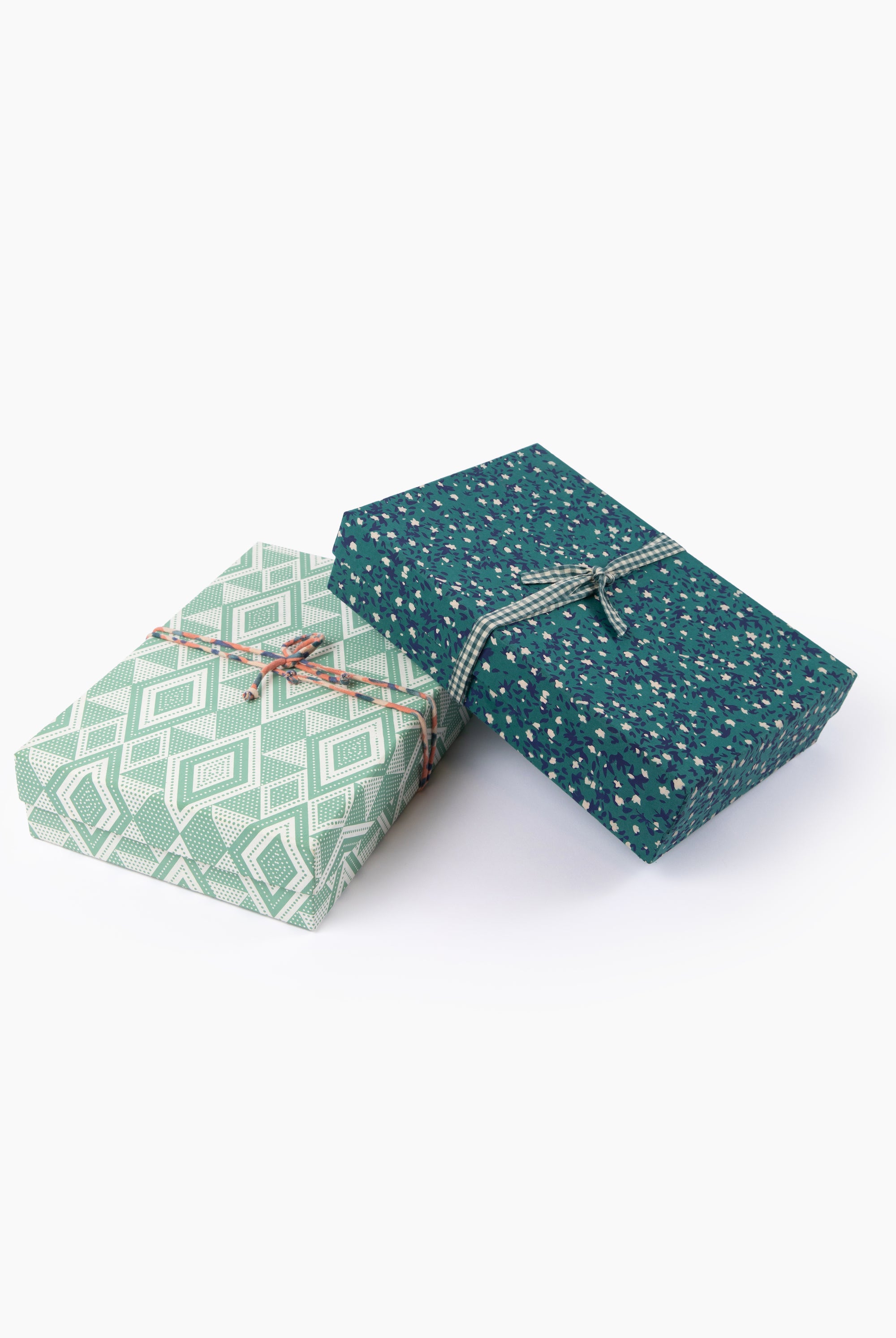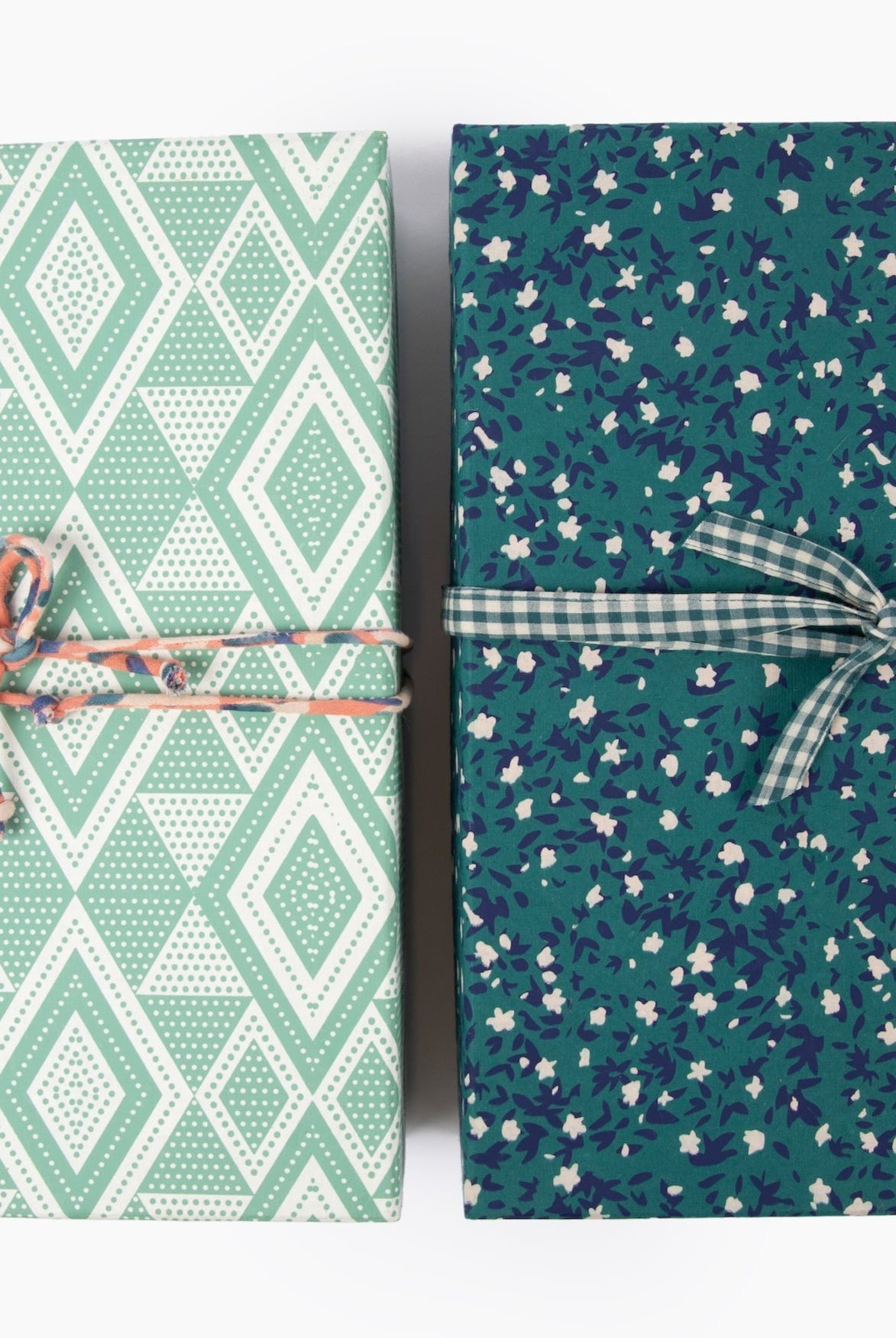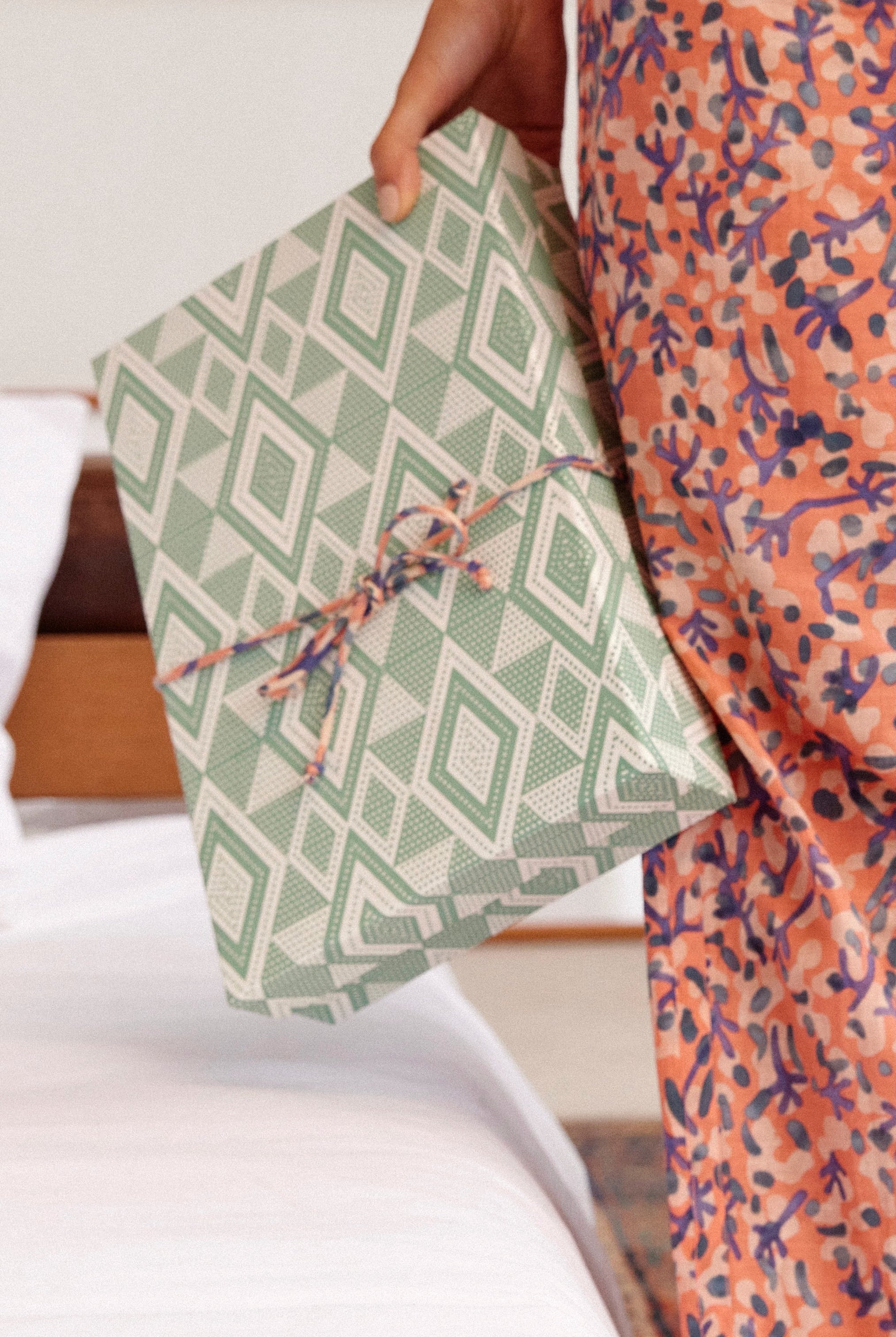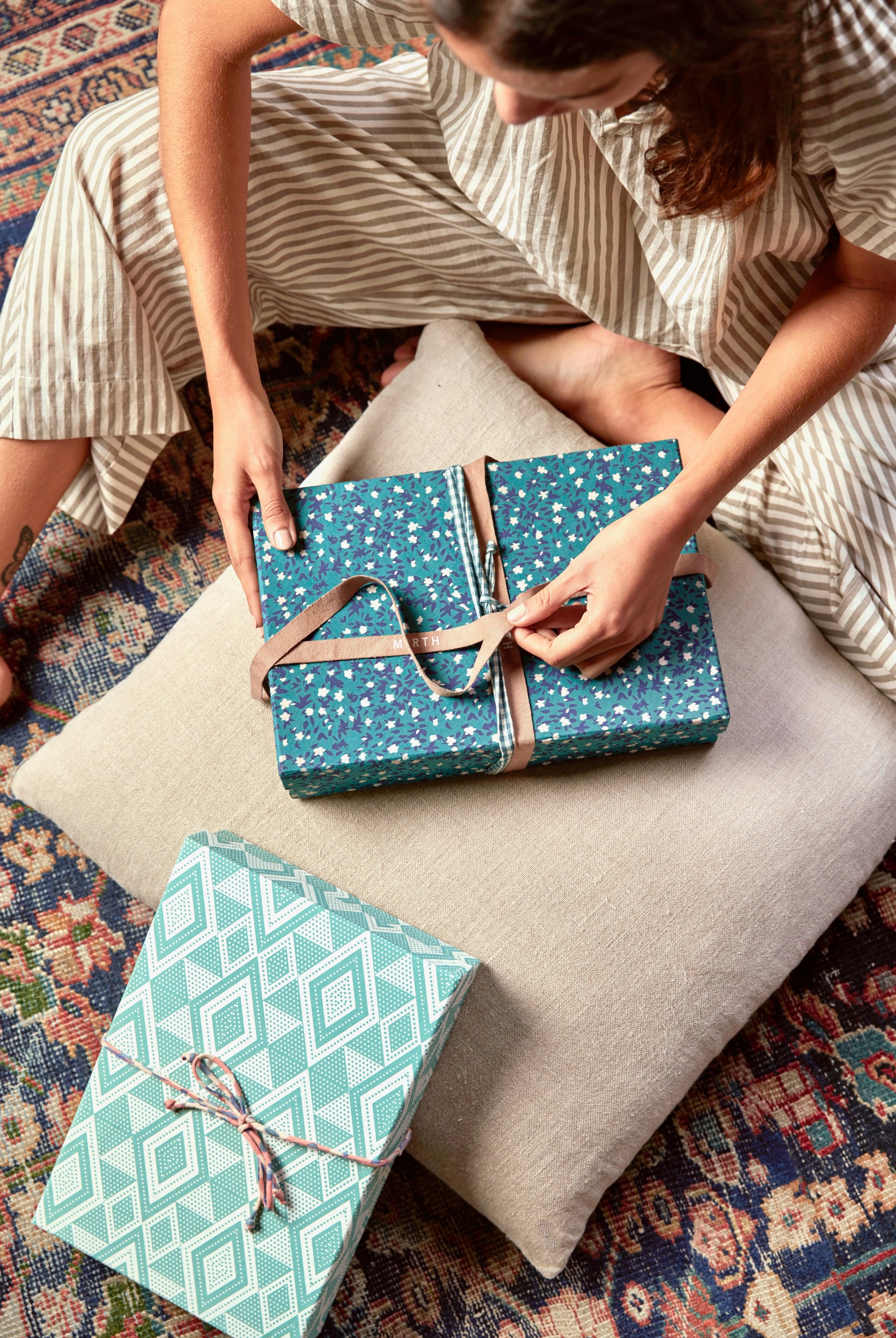with our pre-spring 21 collection, we are excited to introduce our first ever pieces made using the ancient textile printing technique of batik – the palm springs caftan and fiji caftan. batik is truly an art form, and we wanted to share behind the scenes images and videos that we snapped on our last india trip so that you can see the craftsmanship that goes into these designs.
in india, the technique has been traced back to the 1st century ad. for our batik fabrics, we work with a small workshop in kolkata. while the workshop employs men, the workshop owner also teaches the craft to women, many of whom are single mothers and appreciate the part time creative work for extra income to support their families.
batik is a multi-step process done by hand that is quite tedious. it involves prepping and painting wax on the fabric to form the design, hand dyeing, drying in the sun, and then washing to remove the wax. we love the handmade nature of the final creations – if you look closely at our batik pieces you can see and feel the evidence of the skilled hands behind it. the color has a depth to it, the pattern left behind by the wax has a beautiful grainy quality, and each painted pattern is a little bit different.
we hope you enjoy learning about how these special fabrics are made. while we have not been able to visit our partners in the past year, it’s important to us that we continue sharing their craftsmanship and process that shows the purpose, art, history and soul behind each mirth piece.
STEP ONE
cotton voile fabric is washed and is then marked with the design.
STEP TWO
a wax design is carefully applied to the fabric using a hand brushing technique.
a tedious but artful and meditative process
 we took these photos during our visit last february and got to try our hand at painting (we were not nearly as good!)
we took these photos during our visit last february and got to try our hand at painting (we were not nearly as good!)
STEP THREE
an azo free color dye is created and mixed by hand before dyeing the waxed fabric by dipping it into buckets repeatedly. it can also be sprayed on, but we prefer the rich look and hue of the dip dye. note: azo free dye is a synthetic dye that is better for both you and the environment than conventional dyes.
the dyed fabric is oxidized and dried in the sun. notice how the color of the fabric slowly changes from oxidation. the final hue is completely determined by the oxidation process – so it’s kind of a crapshoot!
STEP FOUR
once the fabric has dried, it is then washed in hot water which melts the wax that was painted on. this step is a very laborious as it has to be repeated until the fabric is completely wax-free.

STEP FIVE
the final step is to wring, soften, and dry the fabric.


the fabric is then sent to delhi to be stitched into garments. you can see the final creations in our palm springs caftan and fiji caftan. we love how the color came out and love how soft and special this fabric is. we hope you do, too!

palm springs caftan

palm springs caftan
 /p>
/p>
fiji caftan

fiji caftan
















 /p>
/p>





